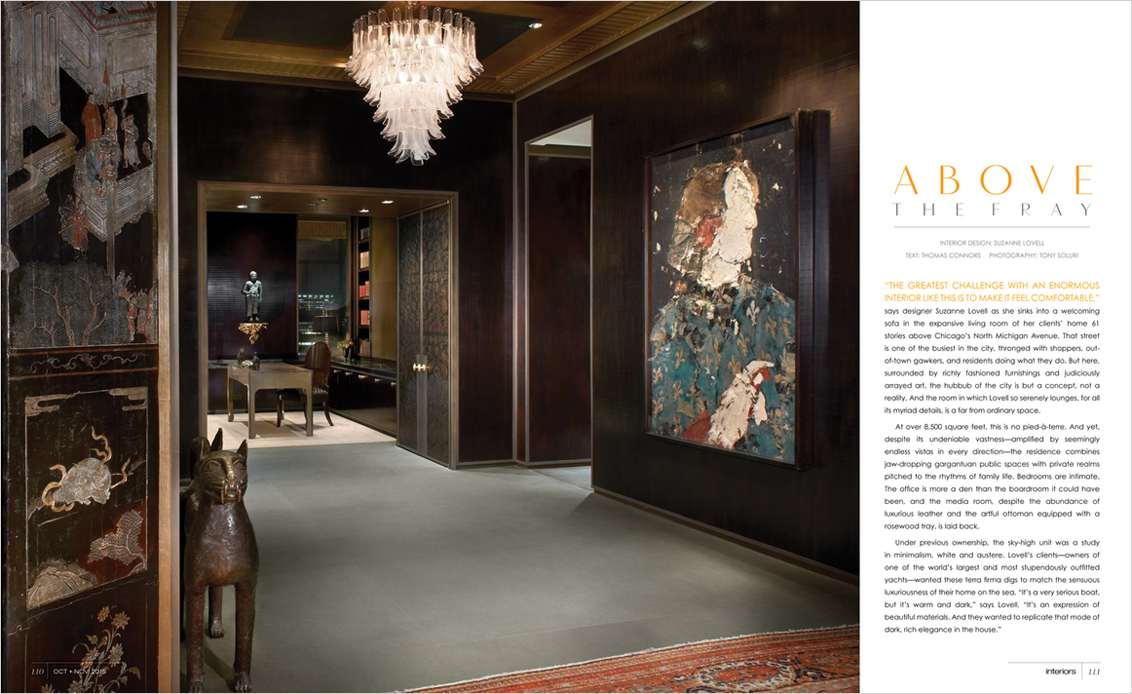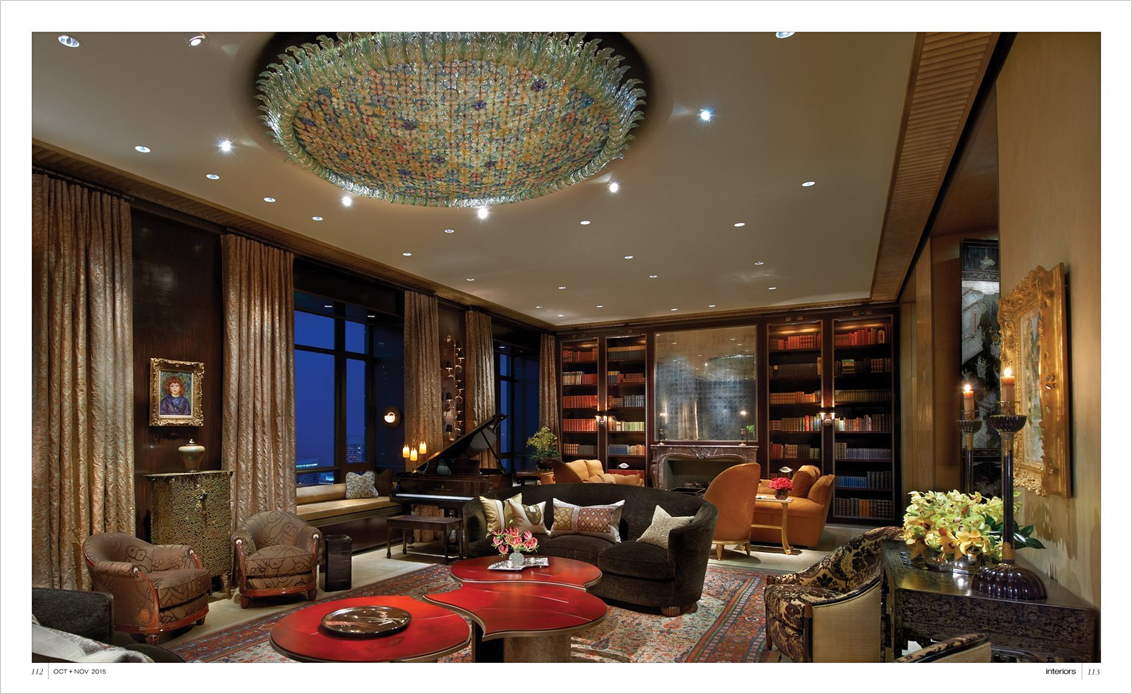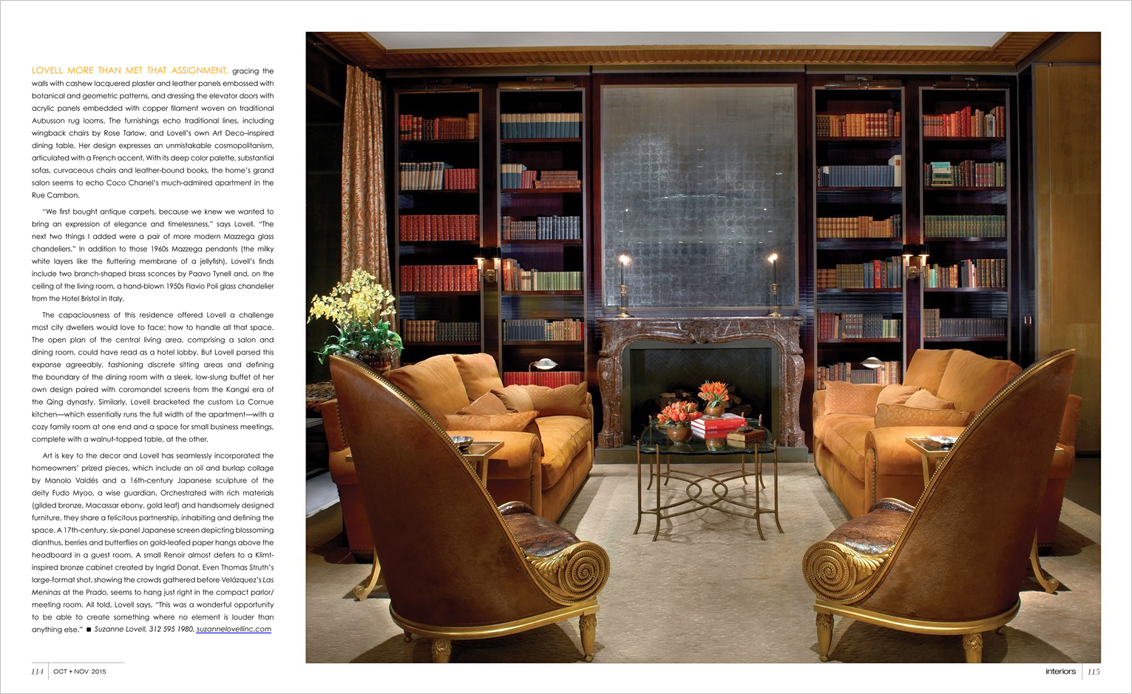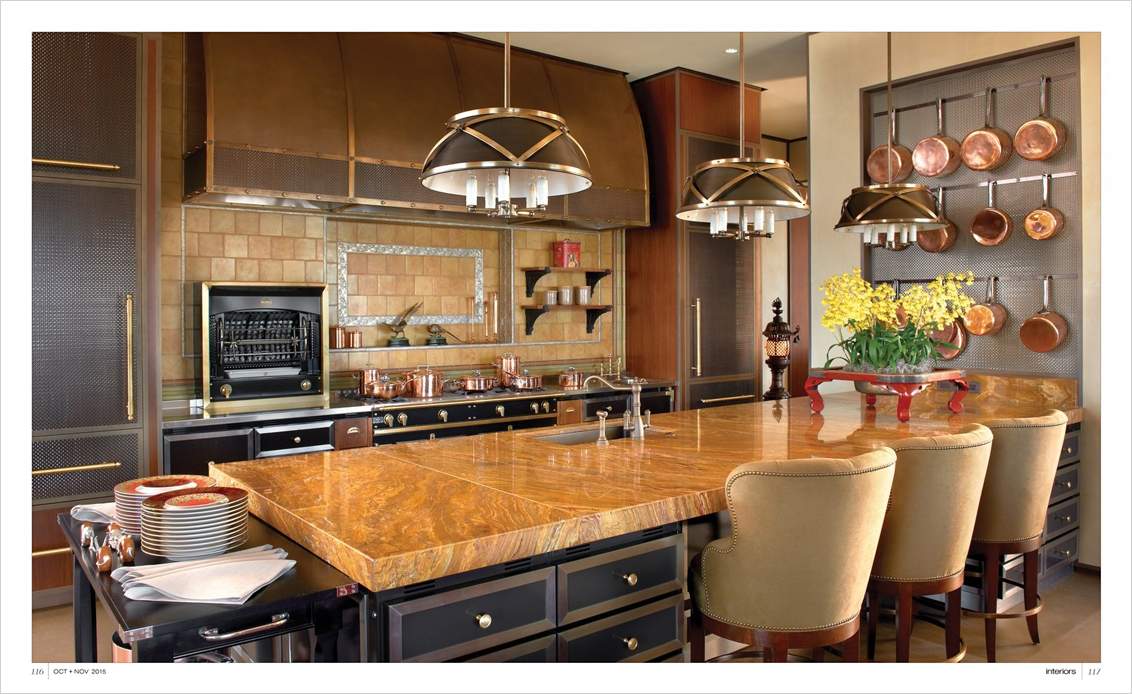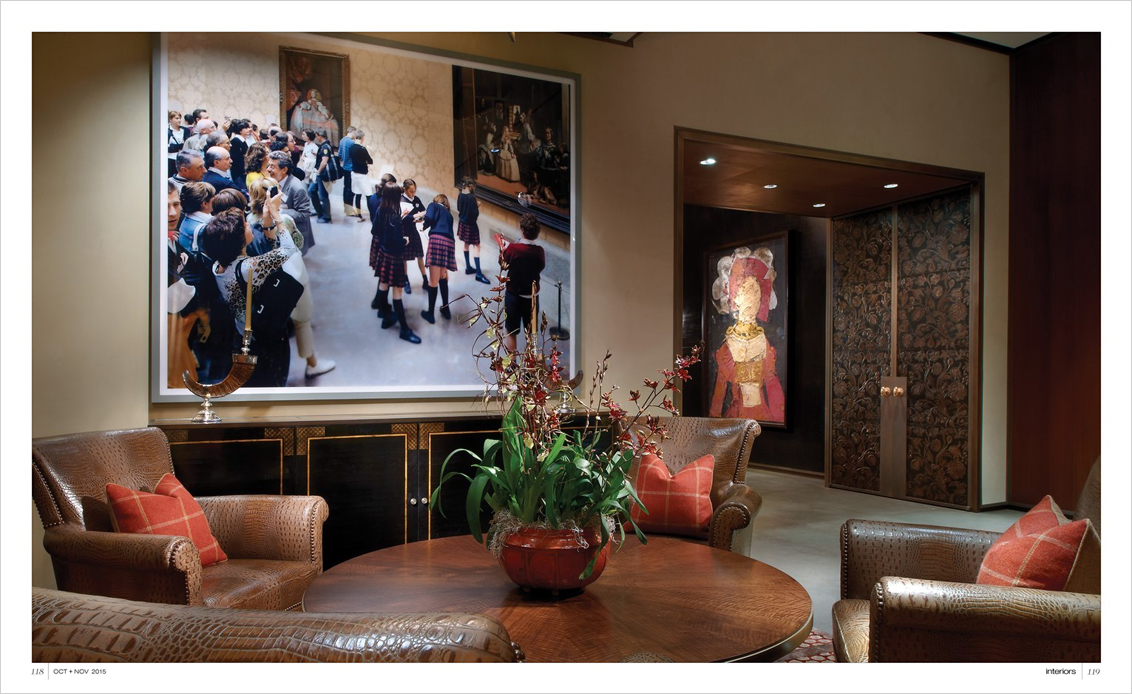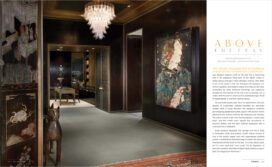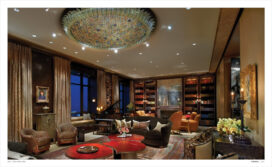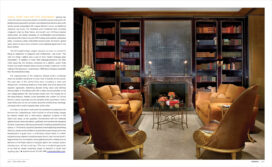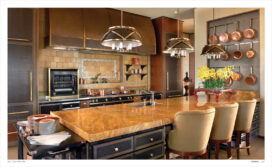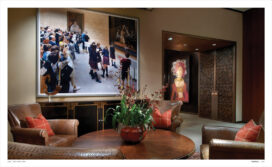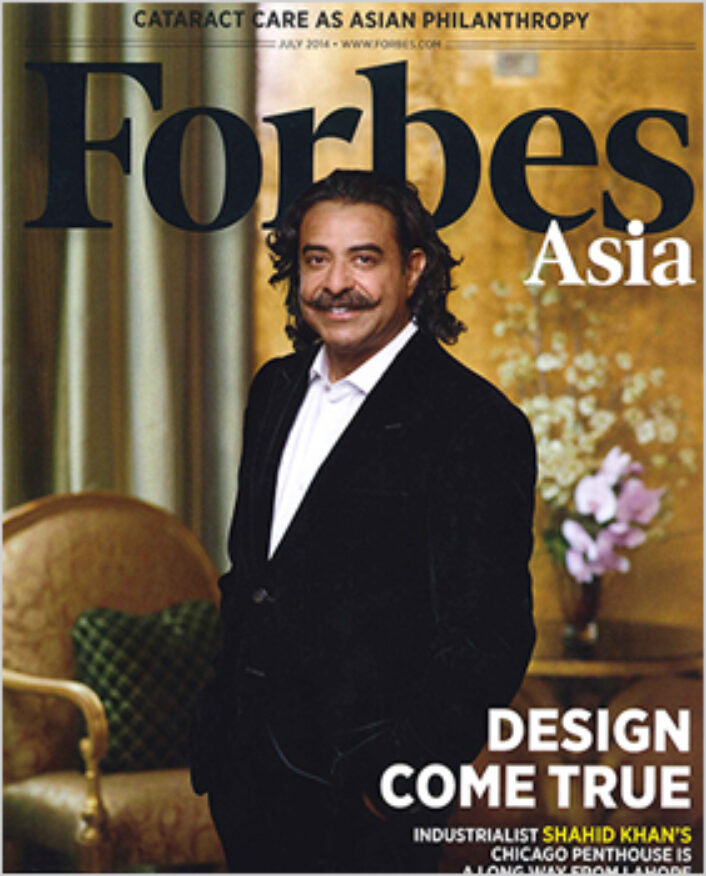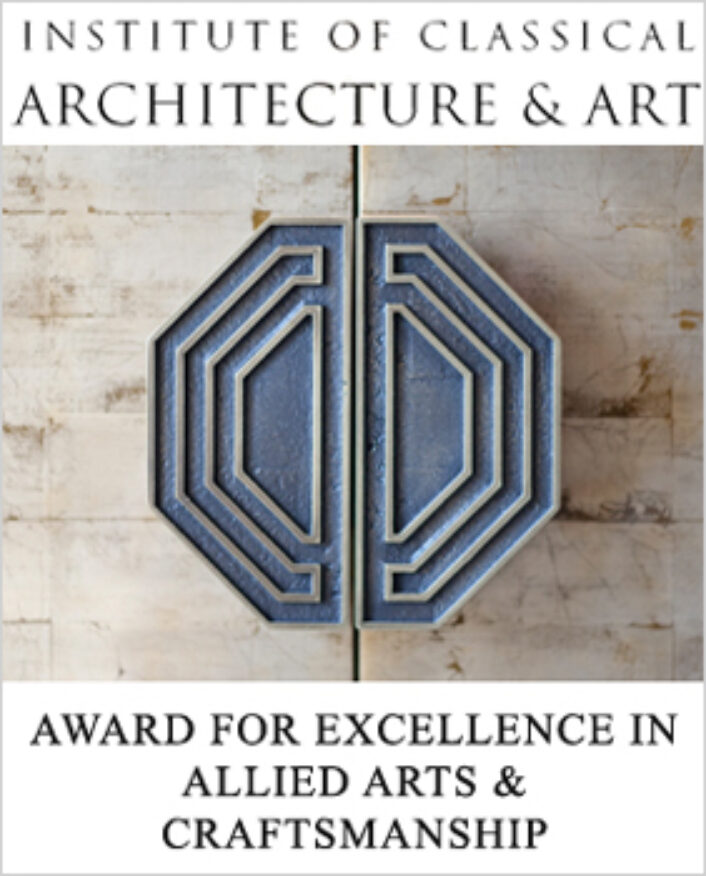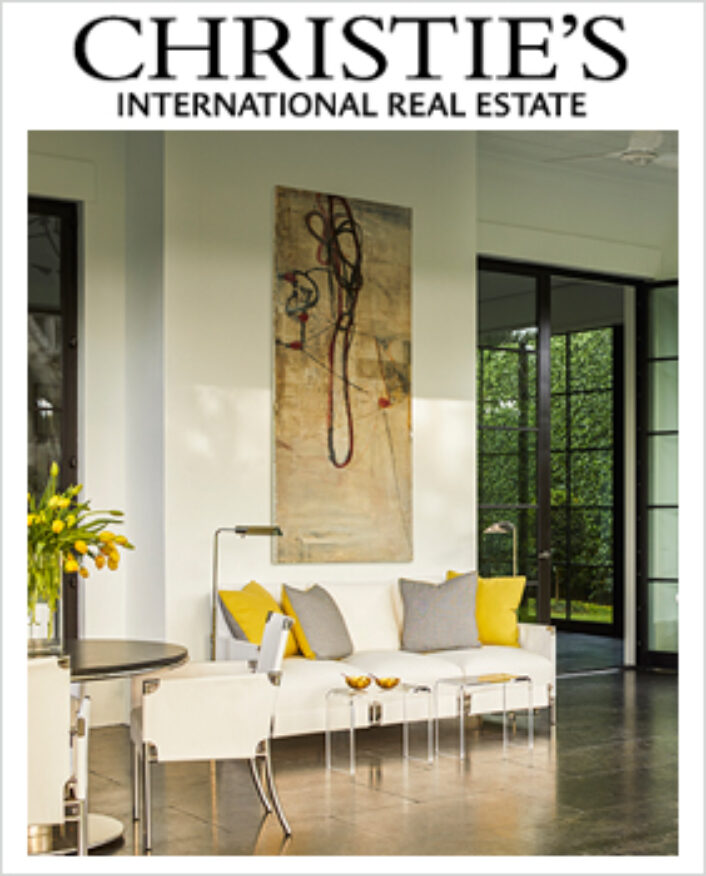Interiors October 2015
ABOVE THE FRAY
“THE GREATEST CHALLENGE WITH AN ENORMOUS INTERIOR LIKE THIS IS TO MAKE IT FEEL COMFORTABLE,” says designer Suzanne Lovell as she sinks into a welcoming sofa in the expansive living room of her clients’ home 61 stories above Chicago’s North Michigan Avenue. That street is one of the busiest in the city, thronged with shoppers, out-of-town gawkers, and residents doing what they do. But here, surrounded by richly fashioned furnishings and judiciously arrayed art, the hubbub of the city is but a concept, not a reality. And the room in which Lovell so serenely lounges, for all its myriad details, is a far from ordinary space.
At over 8,500 square feet, this is no pied-à-terre. And yet, despite its undeniable vastness—amplified by seemingly endless vistas in every direction—the residence combines jaw-dropping gargantuan public spaces with private realms pitched to the rhythms of family life. Bedrooms are intimate. The office is more a den than the boardroom it could have been, and the media room, despite the abundance of luxurious leather and the artful ottoman equipped with a rosewood tray, is laid back.
Under previous ownership, the sky-high unit was a study in minimalism, white and austere. Lovell’s clients—owners of one of the world’s largest and most stupendously outfitted yachts—wanted these terra firma digs to match the sensuous luxuriousness of their home on the sea. “It’s a very serious boat, but it’s warm and dark,” says Lovell. “It’s an expression of beautiful materials. And they wanted to replicate that mode of dark, rich elegance in the house.”
LOVELL MORE THAN MET THAT ASSIGNMENT, gracing the walls with cashew lacquered plaster and leather panels embossed with botanical and geometric patterns, and dressing the elevator doors with acrylic panels embedded with copper filament woven on traditional Aubusson rug looms. The furnishings echo traditional lines, including wingback chairs by Rose Tarlow, and Lovell’s own Art Deco–inspired dining table. Her design expresses an unmistakable cosmopolitanism, articulated with a French accent. With its deep color palette, substantial sofas, curvaceous chairs and leather-bound books, the home’s grand salon seems to echo Coco Chanel’s much-admired apartment in the Rue Cambon.
“We first bought antique carpets, because we knew we wanted to bring an expression of elegance and timelessness,” says Lovell. “The next two things I added were a pair of more modern Mazzega glass chandeliers.” In addition to those 1960s Mazzega pendants (the milky white layers like the fluttering membrane of a jellyfish), Lovell’s finds include two branch-shaped brass sconces by Paavo Tynell and, on the ceiling of the living room, a hand-blown 1950s Flavio Poli glass chandelier from the Hotel Bristol in Italy.
The capaciousness of this residence offered Lovell a challenge most city dwellers would love to face: how to handle all that space. The open plan of the central living area, comprising a salon and dining room, could have read as a hotel lobby. But Lovell parsed this expanse agreeably, fashioning discrete sitting areas and defining the boundary of the dining room with a sleek, low-slung buffet of her own design paired with coromandel screens from the Kangxi era of the Qing dynasty. Similarly, Lovell bracketed the custom La Cornue kitchen—which essentially runs the full width of the apartment—with a cozy family room at one end and a space for small business meetings, complete with a walnut-topped table, at the other.
Art is key to the decor and Lovell has seamlessly incorporated the homeowners’ prized pieces, which include an oil and burlap collage by Manolo Valdés and a 16th-century Japanese sculpture of the deity Fudo Myoo, a wise guardian. Orchestrated with rich materials (gilded bronze, Macassar ebony, gold leaf) and handsomely designed furniture, they share a felicitous partnership, inhabiting and defining the space. A 17th-century, six-panel Japanese screen depicting blossoming dianthus, berries and butterflies on gold-leafed paper hangs above the headboard in a guest room. A small Renoir almost defers to a Klimtinspired bronze cabinet created by Ingrid Donat. Even Thomas Struth’s large-format shot, showing the crowds gathered before Velázquez’s Las Meninas at the Prado, seems to hang just right in the compact parlor/meeting room. All told, Lovell says, “This was a wonderful opportunity to be able to create something where no element is louder than anything else.”
